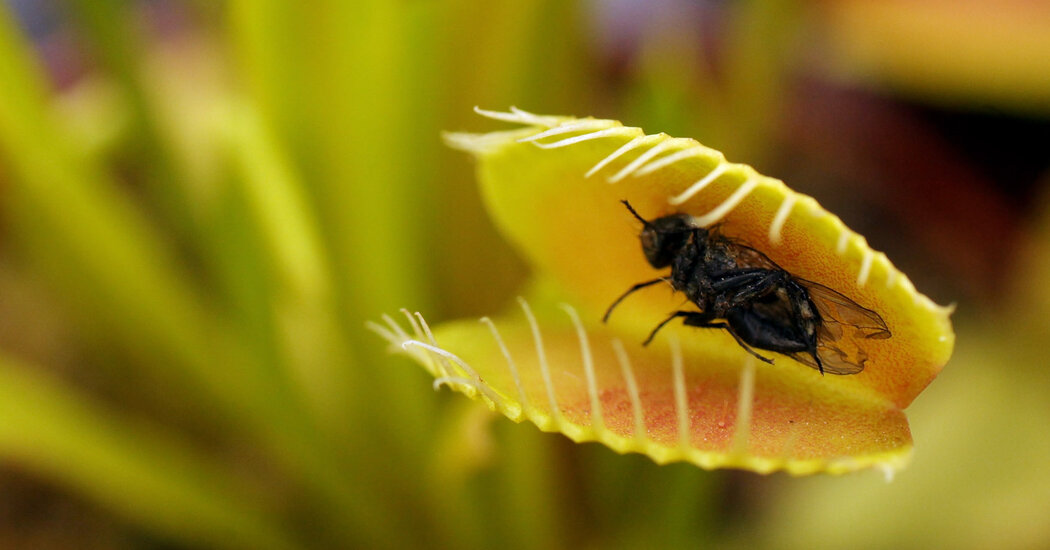Provoking a Venus flytrap takes a certain amount of finesse. If you brush just one of the trigger hairs inside of its leaves, the plant likely won’t react. But if you trigger it again quickly enough, it will spring into action, swinging its famous mouth shut.
Waiting for a double trip probably keeps the plant from wasting energy on raindrops or other things that aren’t nutritious flies. But despite centuries of interest in the species, no one was quite certain how the plants remember the first trigger in order to act on a second.
In a paper published last week in Nature Plants, researchers reported they had found the cause: calcium ions. By inducing the flytraps to glow when calcium entered their cells, a team of scientists was able to show how the ions build up as the hairs are triggered, eventually causing the snap.
Calcium is used for conveying information between cells in many different life-forms, said Mitsuyasu Hasebe, the leader of the lab at the National Institute for Basic Biology in Okazaki, Japan, where the research was done. The molecule is normally “scarce in the cell, but abundant out of it,” he said, making it easy for cells to recognize and react to changes in concentration.
In 1988, a pair of plant scientists hypothesized that two overlapping rushes of calcium ions might spur the Venus flytrap to close, but had no way to test their idea. More recently, another group of researchers — including Rainer Hedrich, who participated in the new paper — solved part of the puzzle, showing that electrical signals tell the flytrap when its trigger hairs have been pressed. They also speculated that calcium helps the plant keep track.
To visualize the flytrap’s memory mechanism, Dr. Hasebe and his colleagues spliced a special type of gene into the plant. This gene, widely used in biology, produces a protein that turns fluorescent green when it binds to a target — in this case, a calcium ion.
Hiraku Suda — the paper’s lead author and a doctoral student in Dr. Hasebe’s lab at the time of the research — was in charge of integrating the gene, which required infecting the plant’s leaves with a modified bacterium and then using those leaves to grow new shoots.
It took him two and a half years to figure it out. The key, it turned out, was raising the plants in the dark, which may have made them easier to infect with the bacteria. When it finally worked, he was so excited, “I didn’t sleep for a week,” he said.
Next, the researchers started poking the plant. After a single tap to a sensory hair, a green flush appeared at the hair’s base and quickly spread across the leaves, indicating a surge of calcium ions.
A second tap within about 30 seconds spurred an additional surge, pushing the total calcium amount over a threshold that caused the trap to close. (In videos of the experiment, the glowing, chomping flytrap looks like a carnival fun house entrance.) But if the researchers waited too long between taps, the concentration decreased again, and the trap didn’t budge.
“Being able to actually see the calcium wave start in the deflected hair and travel across the leaf is truly amazing,” said Ueli Grossniklaus, a plant biologist at the University of Zurich who was not involved in the research. Earlier this year, Dr. Grossniklaus helped to show that in some cases, a single, slow deflection of a trigger hair can also cause the flytrap to close. He said that more research on how the calcium and electrical activity relate, and on the force and speed of the trigger taps, would further illuminate the plant’s workings.
Dr. Suda, now a postdoctoral fellow at Saitama University in Japan, plans to use his new method to study the capturing of prey, digestion and other activities of the flytrap. They are “beautiful plants,” he said. “I can always make new questions from seeing them.”
Source: Read Full Article
